It feels weird writing it as color instead of colour but as it is the proper name of the camera I will have to struggle through. The Polaroid Colorpack II is one of several rigid body pack film cameras to come out of Polaroid through the late 1960s and into mid 1970s, there has been several different models to carry the Colorpack name and all seem to share similar specifications. It’s been a while since I used this camera, and I think I ended up donating it to another photographer as this was one of the first pack film cameras that I ever got. It also got me bitten by the instant photography bug. A special thanks to Mike Raso of the FPP for this donation a long time ago now.
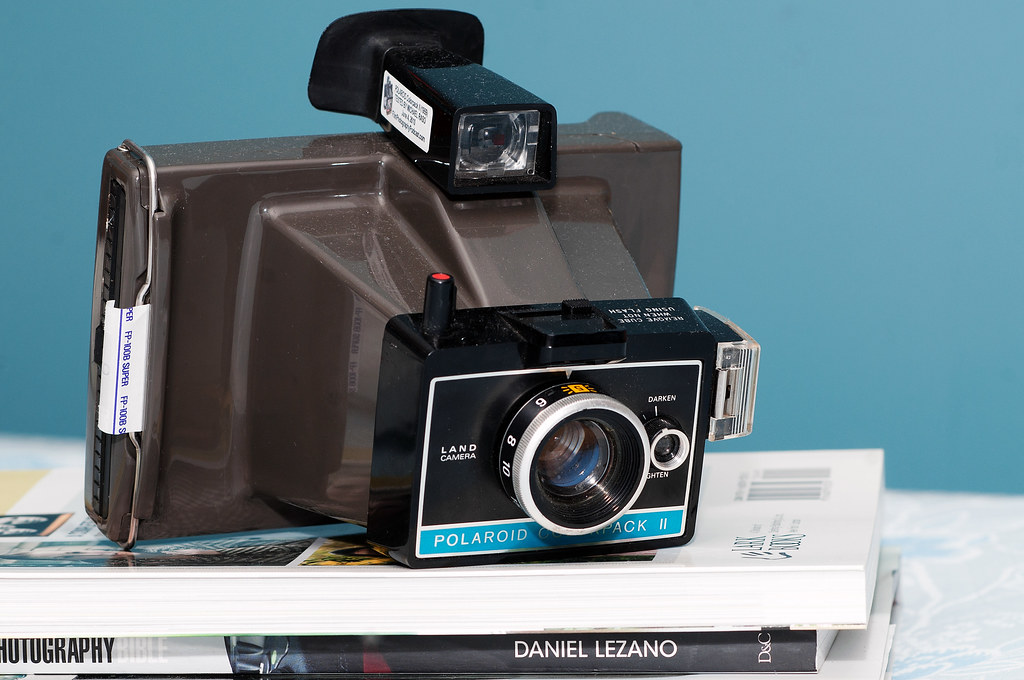
Nikon D300 – AF DC-Nikkor 105mm 1:2D
Camera Specifications
Manufacturer: Polaroid
Model: Colorpack II
Type: Point-And-Shoot
Format: Type-100 Instant Pack Film
Lens: Polaroid Triplet Lens 114mm f/9.2 (3-Element, Uncoated Plastic (Early), Coated Glass (Late))
Shutter: Leaf Shutter, 10s – 1/500s
Meter: External CdS, ASA-75 or ASA-3000
Power Source: 2x AA Batteries
Year of Manufacture: 1969-72
Background
In 1932 Edwin Land established Land-Wheelwright Laboratories with his former physics professor, George Wheelwright. Together they began producing polarised lenses for military applications. By 1937 the company changed the name to Polaroid. However, it wasn’t until 1943 that Land started to experiment in instant photography. Land developed a system that exposed a negative, and using a reagent transferred the image to a positive print. In 1947 he demonstrated the process to the public. A year later in 1948, the first camera, or rather Land Camera came onto the market, the Model 95. If you’re a sharp-eyed viewer, you’ll realise that an episode of M*A*S*H had one such camera as a central plot point. The trouble with these early cameras and film is that they came in rolls, took about a minute to fully develop and only produced a sepia or black & white image. These early cameras also lacked any automatic functionality and were heavy, bulky, and relied on either manual exposure or a clip-on meter. In 1963 Polaroid introduced two new items. The first being a colour instant film and a new instant film format. The new format came in a pack of ten shots, sized at 3.25″ x 4.25″ known as Type-100. While Polaroid continued to promote their new format, they also realised they needed to break into the consumer market with their cameras and in 1965 introduced the Polaroid Swinger that used the Type 20 roll film, exposure was aided by an internal meter. The Swinger (and I’m sorry that you probably now have the jingle in your head) and by 1968 a new version the Big Swinger hit the market that took the Type-100 film format. Production of the Big Swinger continued until 1970, but in 1969 the Colorpack II hit the market in 1969, what makes the camera special is that it was the first rigid model camera to use the colour Type-100 film. The early models of the camera used a plastic triplet lens, while later models used coated glass elements. Polaroid also released the Colorpack III and Colorpack IV at the same time, with the Colorpack III featuring a focusing aid and a film development timer, while the Colorpack IV only had the development timer. These initial models were all discontinued between 1971-2, but the line continued with the Colorpack V (or CP5), the Super Colorpack, Colorpack M6, Colorpack 100 and Colorpack 200. The Colorpack and all ridged body type-100 cameras were discontinued in 1978.

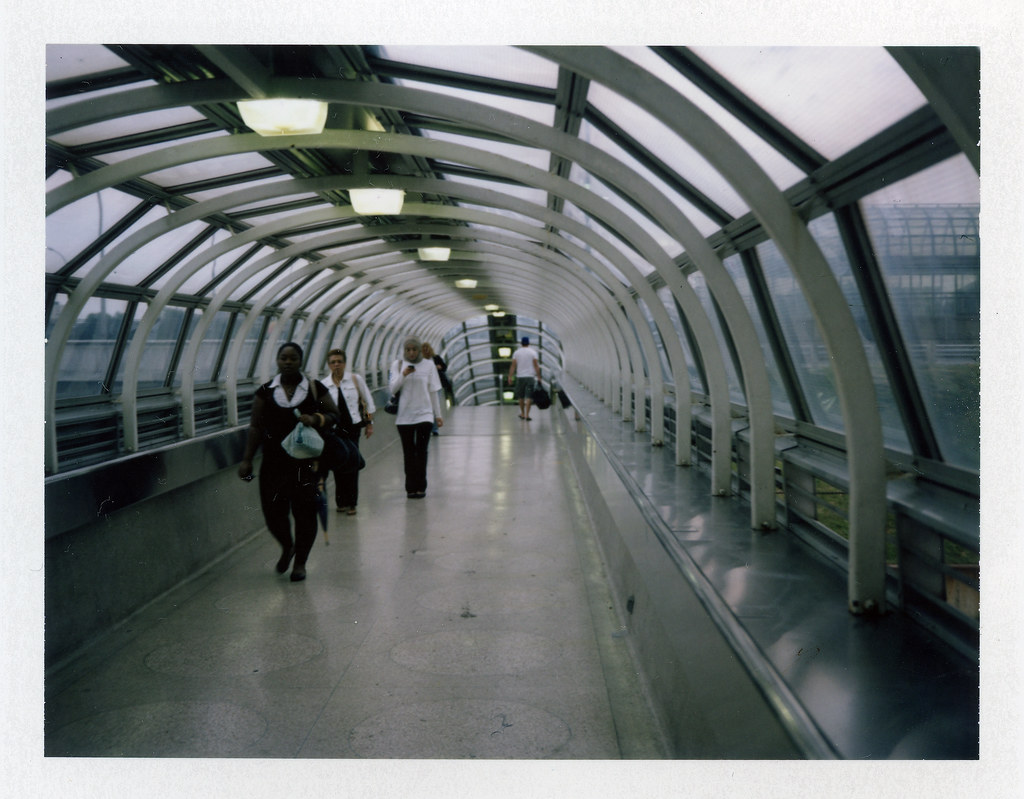
Impressions
I had seen old Polaroid cameras before at garage sales, some the folding type-100s and some older roll-film types. But never one of the ridged-style cameras outside of pictures. There is something fun about the style. Sure, the folding cameras with the bellows have a classic look and feel that harkens back to the time when such cameras were the norm in style. This is basically the same thing but without the ability to fold it up. So the camera does take up a lot of room in any bag that you have. It’s big, bulky, and takes up a lot of space. Despite being plastic, the build quality of the camera is solid, and it feels good in the hands. However, this is also a camera that you have to use both hands to operate and keep steady. Never did I feel like the camera was going to fall apart on me. The controls are simple but are clearly labelled; remember, these were designed for the average person to use Polaroid film. The one thing that I was not happy about was that the focus of the lens felt loose; there was only a slight amount of feedback when turning. The viewfinder is decent; it is a viewing tube with magnification to help with composition but no frame lines to help with parallax. The Colorpack II is definitely a camera that shows off the Polaroid design language of the era.

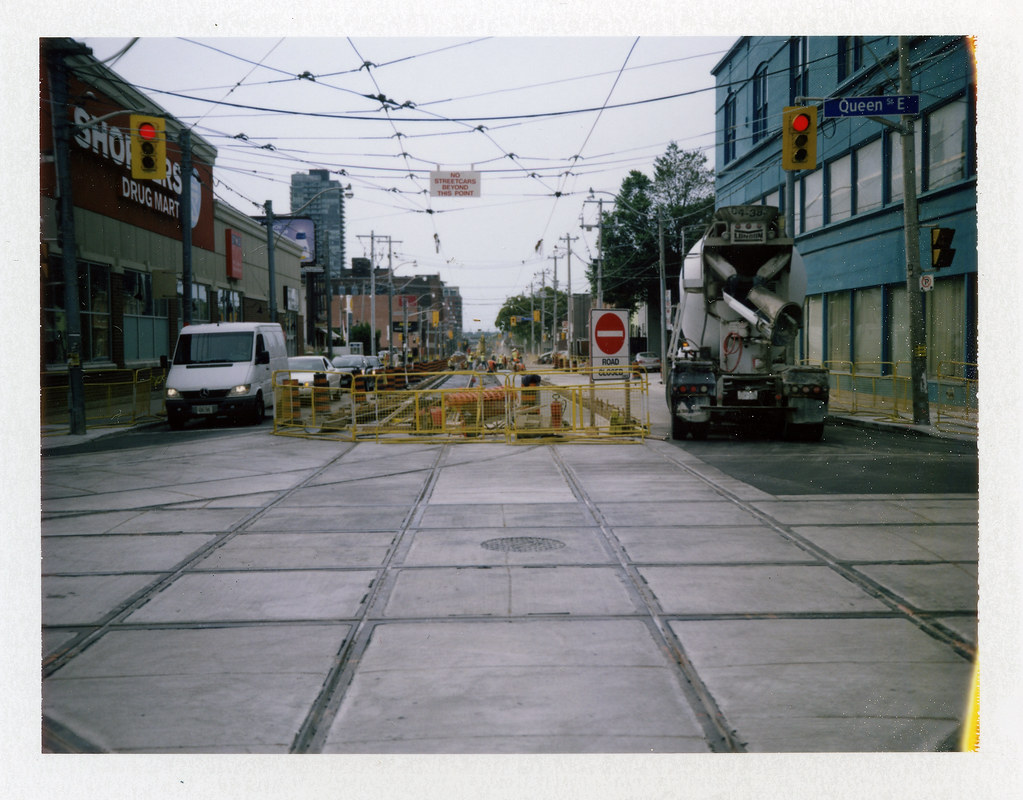
Experiences
If you’ve never used a type-100 camera before, then the Colorpack II is an excellent entry into the system. The camera itself is simple to operate; remember, these were designed for consumer users; everything exposure-related is automatic, even more so than the Swinger. You set the ISO manually with two options: 75 for colour and 3000 for black & white. Now, that does oversimplify things because when I used the camera, you also had slow B&W options, like FP-100B, and faux-colour offerings like Chocolate. This also sets the aperture based on the film speed, and then the electric eye does the heavy lifting by setting the shutter speed. You do want to use two hands to keep the camera steady, and the shutter release is a big, long plunger with a solid-sounding shutter. You do want to keep a firm grip and balance the front of the camera while holding onto the grip on the back. The viewfinder offers little help for focusing, which is all manual, and I always found the focus fiddly. It felt as if the helical was loose and without any real control, you often guessed. After a few times, I got used to guessing the focus distance. The nice thing is that with a lens with a small open aperture and a focal length that was close to normal, you could get most things in focus. You also had to watch out for the composition with no frame lines to help guide you in avoiding parallax errors. But the best feeling with the camera is pulling out the tab and then counting down and peeling open the film pouch; the chemical smell was amazing, more so on the original Polaroid films, but even the Fujifilm stocks had a delightful chemical smell.
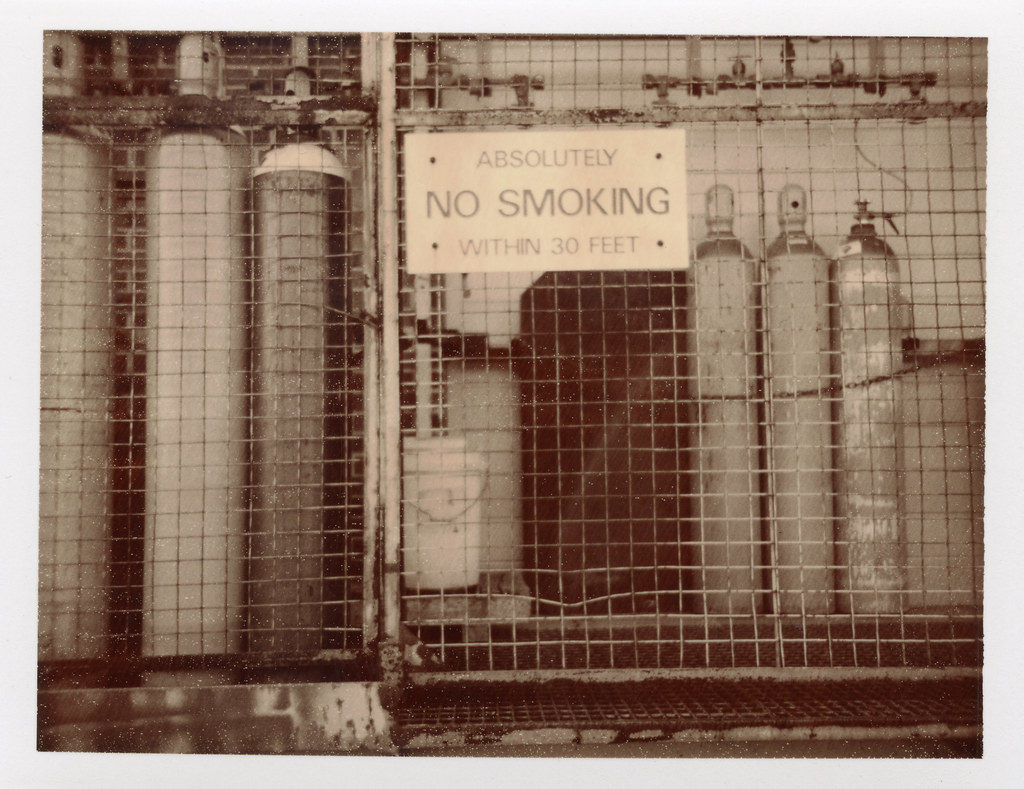

Optics
The one thing I found interesting about the lens in this camera is that there are two versions. The early models used uncoated plastic, but the later ones used coated glass. In both cases, you’re looking at a triplet (3-Element) design, which is a design that I’ve always admired in simple cameras. You look at all the Soviet cameras, which are the most used triplet designs. I cannot recall which version I had, but looking back at the images, I’ll guess that this model had the later glass optics. The lens has a focal length of 114mm, which seems long when thinking in 35mm terms, but given the larger image size of the Type-100 film, the angle of view is close to what you see with your eyes. The images I got out of the camera are sharp, not like high-end optics sharp, but still good for what they are. Of course, the biggest issue is that the focus is guessing, so I didn’t always nail that aspect. But when I did, I was impressed with the image quality. And you know I liked how the lens rendered both colour and black & white films. In the end, the Colorpack II used the same trick as box cameras: any quality issues with the optics are minimised by using small apertures and a large final image, which means that I’ll rate the optical quality as good.
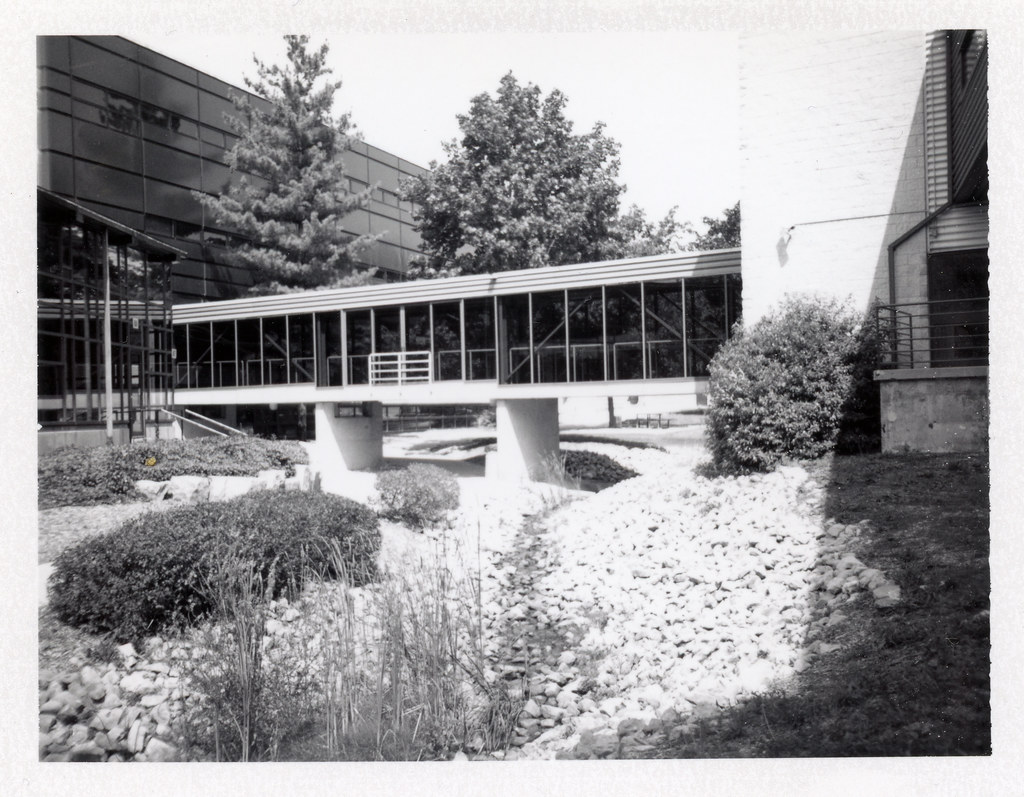

Lowdown
While I kept the Colorpack II around for a while, I quickly switched to using the folding Auto Lands Cameras, which I clearly see as a better camera; the versions that I used, the 240 and 250, had glass lenses and rangefinder focusing and offered up a far better experience. But the Colorpack II is the starting point in my short journey with Type-100 films. And you know, as a starter camera in that field, it is an excellent choice. The trouble is that today they aren’t as valuable as a camera, mainly because of the discontinuation of all pack films that were available when I first started using the format. With that, the film that is still hanging around has a premium price tag attached, and there is always the chance that you’ll meet catastrophic failure. But suppose you are an avid collector of all things Polaroid. In that case, a Colorpack II is a nice addition to your collection, but don’t get too spendy on them. These things were made in mass quantities and sold on the cheap. Brand new, the Colorpack II costs $29.95 (USD), which in 2025 is $260.98 (USD) or 360.19$ (CAD); on the used market, the cost is around the original price, most in the 20-30$ range, so don’t spend anything more than that top price point. While being far from perfect, the Colorpack II was a fun camera to use, and I’m glad I got one and got into Instant photography. While I don’t work with the format (Instant) that often these days, I still keep a Polaroid around just in case I feel like getting that (near) instant satisfaction.


Further Reading
Don’t just take my word on the Colorpack II; you can check out the reviews by other awesome camera reviewers!
Down the Road – Polaroid Colorpack II
A Quirky Guy with a Camera – Late to the (Polaroid) Party: Polaroid Colorpack II
The Colorpack II was my favorite packfilm camera. Sure, some of the bellows bodies were a lot more capable. But when the Fujifilm films were all that were available, the bellows cameras squeezed the plastic packs too hard, which made it nearly impossible to get the first few prints out. The rigid-bodied cameras didn’t have that problem, and the Colorpack II with its glass lens gave terrific images.
Somewhere in a Canadian Tire storage bin I have a “Big Swinger”[hilarious that the name got through] that I used for Fuji 3000b BW. Loved the thing